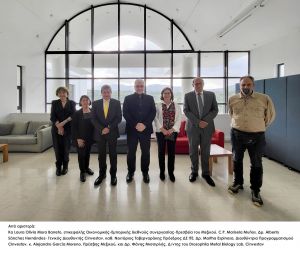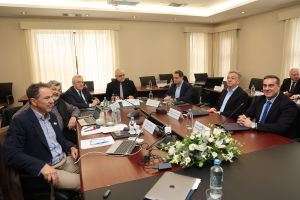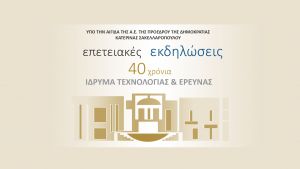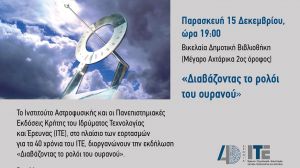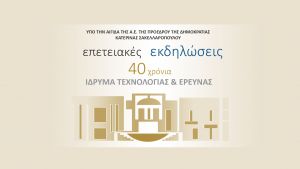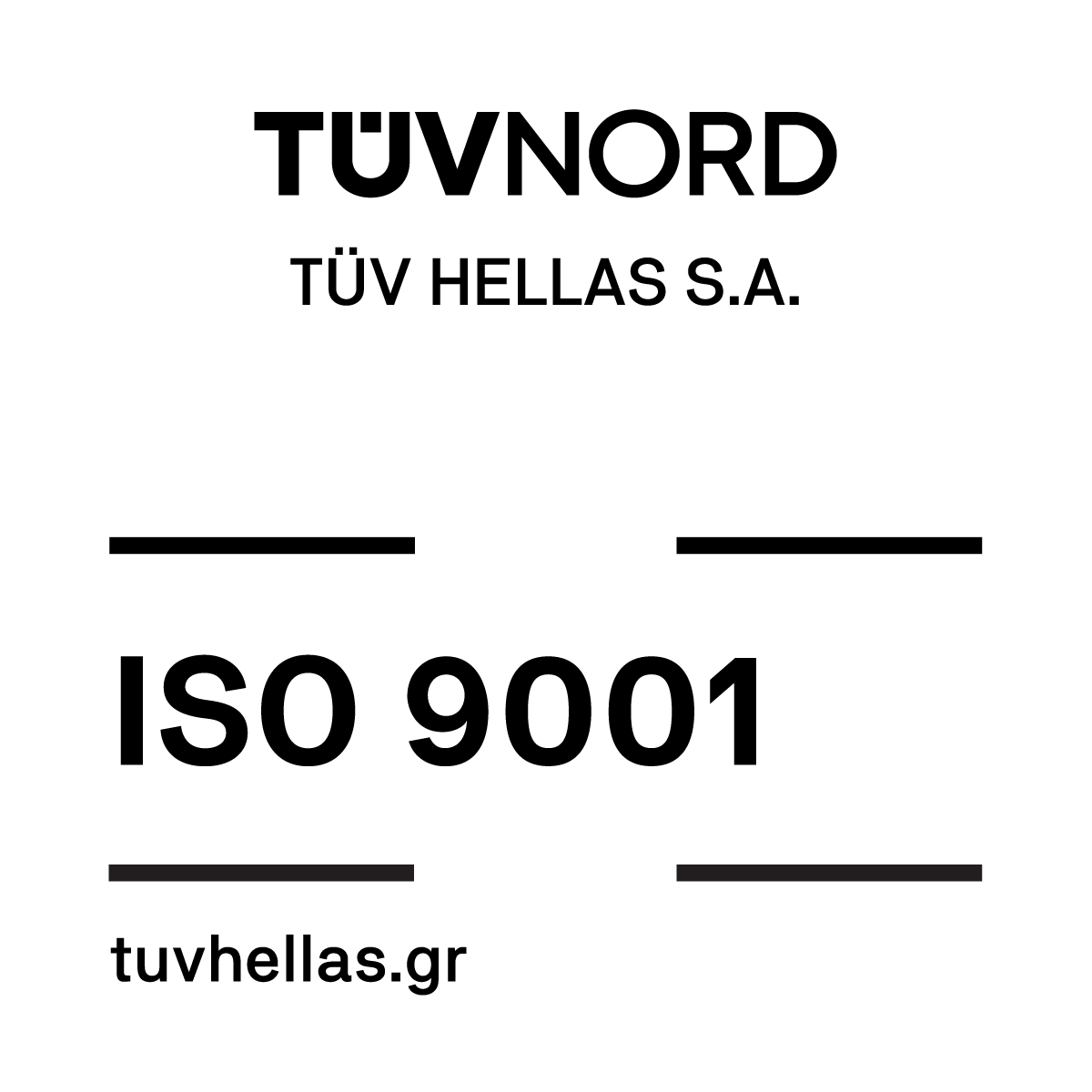Newsroom
CINVESTAV, the largest Research Organization of Mexico, visits FORTH, in the presence of Mexico’s Ambassador in Greece
The visit took place on Tuesday, 5th of March, with the aim of establishing tighter scientific cooperation between Greece and Mexico.
Conference of the Council of the Directors and Presidents of the Greek Research Centers and Technological Institutions at FORTH
The 159th Conference of the Council of the Directors and Presidents of the Greek Research Centers and Technological Institutions was held on Thursday, February 29, 2024, on the premises of FORTH, under the chairmanship of FORTH’s President, Prof. Nektarios Tavernarakis, who serves as Coordinator for the first semester of 2024.
New Director of the Institute of Geoenergy of FORTH
Mr. Ioannis Yentekakis, Professor at the Technical University of Crete and Collaborating Member of the Research Staff at the Institute of Geoenergy of the FORTH, was elected Director of the Institute on January 22, 2024.
European Institute of Innovation and Technology summit in Brussels
The summit was opened by Prof. Nektarios Tavernarakis, Chair of the EIT Governing Board and Executive Committee and President of the Foundation for Research and Technology - Hellas (FORTH), and Mr. Margaritis Schinas, Vice-President of the European Commission.
Prestigious ERC Consolidator Grant awarded to FORTH Researcher Dr. Panagiotis N. Moschou
Panagiotis N. Moschou, Researcher at the Institute of Molecular Biology and Biotechnology (IMBB) of the Foundation for Research and Technology – Hellas (FORTH) and Associate Professor at the Department of Biology, University of Crete is awarded a Consolidator Grant from the European Research Council (ERC).
smartHEALTH European Digital Innovation Hub’s Annual Forum: Cutting edge technologies for the digital transformation in Health
The European Digital Innovation Hub “smartHEALTH” successfully held its Annual Forum on January 17th and 18th, 2024, at the NCSR “Demokritos” to review its first year of operation.
FORTH’s 2023 Award for Excellence in Academic Teaching goes to Professor Dionysios Kokkinos
The work of Dionysios Kokkinos will be presented by the Emeritus Professor of the University of Athens, Panayotis Macheras.
Celebration of the 40th anniversary of the Foundation for Research and Technology - Hellas
Under the auspices of Her Excellency (H.E.) the President of the Hellenic Republic Katerina Sakellaropoulou, the Foundation for Research and Technology-Hellas (FORTH) celebrated its 40th anniversary (1983-2023).
Measuring time through the celestial clock
The event was organized within the framework of FORTH’s 40th anniversary celebrations, the Institute of Astrophysics and the Crete University Press of FORTH.
Celebration of the 40th anniversary of the Foundation for Research and Technology - Hellas
Under the auspices of Her Excellency (H.E.) the President of the Hellenic Republic Katerina Sakellaropoulou, the Foundation for Research and Technology-Hellas (FORTH) celebrated its 40th anniversary (1983-2023). The festivities started on Monday, December 11, 2023 and culminated on Sunday, December 17, 2023, with a Celebratory Event, which took place at the Foundation's headquarters in Heraklion, Crete.
Page:1 .... 111213141516171819 .... 82 | < Prev Next >

